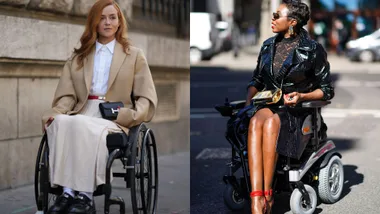For meaningful change within our offices, inclusion is key. Here, Carol Innes, Manager Aboriginal Cultural Heritage & Arts Development WA, Co-Chair Reconciliation WA and an alumnus of Cranlana Centre for Ethical Leadership, reveals how leaders can foster inclusivity
In order to address systemic racism and bring about inclusive leadership between Aboriginal and non-Aboriginal people in Australia, we have to get real (or RREAL). Here is my advice for leaders and organisations wanting to take action to encourage diversity…
Respect: Respect must go two ways. There are different ways of knowing, being and doing. With bosses and staff, there needs to be two-way learning from each other. This goes beyond cultural awareness and understanding — yes, you need to make sure you’ve invested in training for all of your staff so that they are culturally aware, but also that they know how to identify and address systemic racism. Respect also means knowing who the First Nations people are on the country where you work or where your office is situated.
Recognition: We need to recognise the personal capacity and unique skills of the individual. Not every Aboriginal person will have a connection to family and culture, so give them space and time to invest in that. Leaders should not expect every Aboriginal person in their organisation to be the same. While an employee may do well in their role at work, their role at home and in their community may have a different leadership structure and expectations, and this can be recognised with the development of relationships. I’ve had experiences in my career where I’ve been dealing with a junior staff member and I’ve later found out that he’s actually the leader of his family and the cultural knowledge holder for the family. It’s about acknowledging that we all have different roles, and for many people, being at work is just one of them.

Environment: The culture of your organisation has to be safe. That is, it needs to be a safe space to express and to nurture, and there needs to be free flowing dialogue and conversations. If you say there is an open door, it has to be open. Relationship development is critical for building this safe environment. This is created by how you are talking, listening and hearing. An environment of trust is built through not only listening but on acting on what you’ve heard. Many times over the years I’ve had employees come to me with issues or seeking help, and that takes a lot of courage. But if every time someone comes to your door — whether they’re Aboriginal or not — and you’re busy or you say “not now”, that’s not going to contribute to building a safe and nurturing environment. You need to invest in what you say you’re going to do, you need to give all employees attention.
Acknowledgement: We need to acknowledge employees as whole people and value their assets beyond the work capacity. Outside of the workplace someone might spend a huge amount of time engaging with and supporting their community. Seek to understand the community standing your team member has and the time and obligations that this comes with. Recognise the years of relationship building that people bring into the workplace and always acknowledge community obligations and family responsibilities.
For example, in addition to my role at Development WA which is a demanding job, I’m also co-chair of Reconciliation WA and a grandmother looking after four grandchildren full time. If I didn’t have relationships with my employers and my team, they wouldn’t know this about me, and it would make things really hard and potentially unworkable. For people in senior positions, you need to ask first and have these conversations with your team.
I think one of the positives of the pandemic is it’s shaken up a lot of the formalities we had around work and the division between work and home. We’ve all been invited into each other’s’ homes in a way we wouldn’t normally, and we’ve seen some of what goes on when we’re not all at work.
Listening: You need to listen with your whole body, not just your ears. Pay attention to body language, not just to what is being said. Don’t listen to extract information or wait to be told what to do. Listen with your full being so that you can formulate your own thoughts and take action based on what you have come to know.










